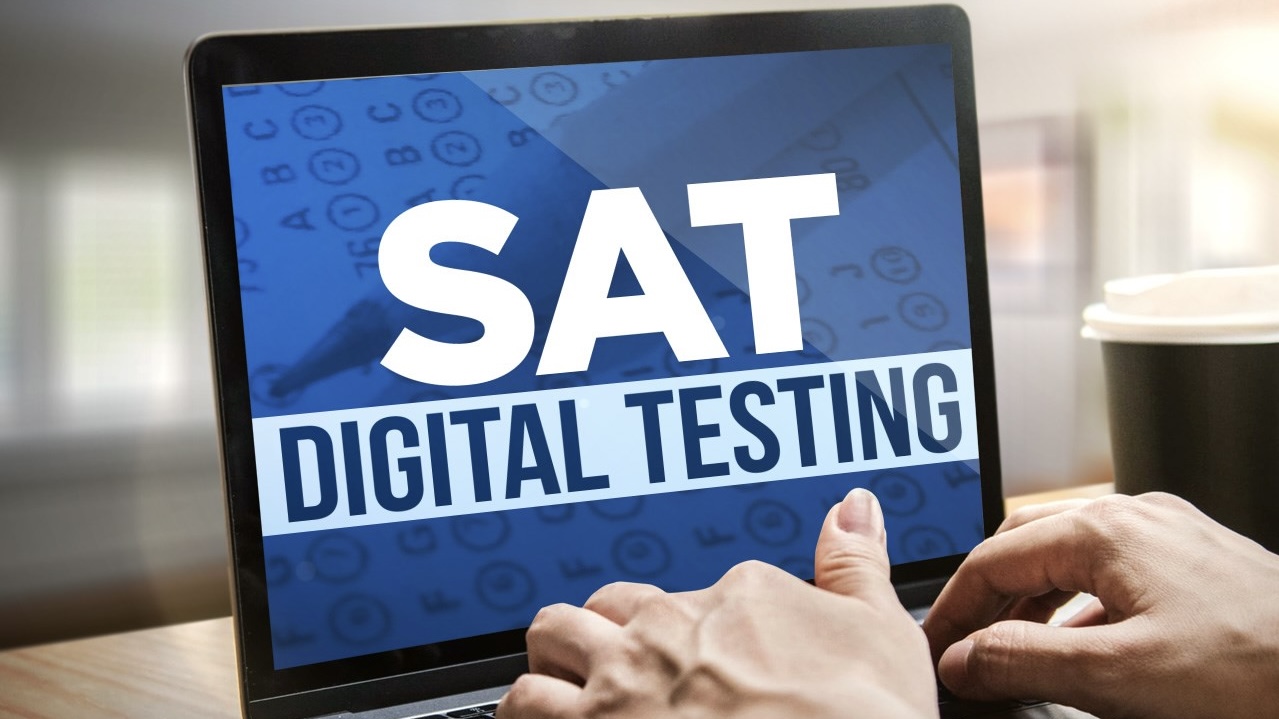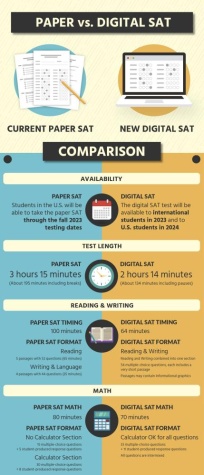
Carly Altman | Writer
March 14, 2024
Most high school students are familiar with the SAT, a standardized test commonly used in senior-year college applications. Administered by College Board, the SAT tests student knowledge and skills in math and evidence-based reading and writing. However, this year the long-standing exam has undergone several major changes. This March, the first digital SAT (DSAT) was administered to high school students in the United States.
The SAT, notorious for its length and paper-pencil format, has gone entirely digital, and the entire format of the test itself has gone under a massive transformation. The length of the test has been shortened to just over 2 hours, nearly an hour shorter than the paper-pencil version. The DSAT also has significantly fewer questions, totaling 54 reading and writing questions and 44 math questions. The DSAT promotes accessibility for students, providing a graphing calculator for the entire math section, a digital countdown for the entirety of the test, and a system to mark questions for review.

However, the biggest change from the SAT to the DSAT is the new, adaptive format. While the original SAT provided the exact same questions for all students on a given test day, the DSAT is configured as a multistage adaptive exam. Each section (Math and Reading/Writing) is divided into two modules, each providing an equal amount of questions and time. The first module for each section provides a variety of questions at easy, medium, and hard difficulty levels. The difficulty of the second module is dependent on your success rate in the first module for that section. If you performed well in the first module, you will be placed in a more difficult second module. If you do not do well, you will be placed in an easier second module. However, if you are placed in an easier second module, there will be a cap in place for how high you can score.
With all of the changes made, the DSAT was a completely new and different experience for students taking the exam. Just this past weekend, the DSAT was held at San Clemente High School, along with several other schools. Many students who took the March 9 SAT, including myself, have very strong opinions about the new testing system.
“The study materials provided by College Board were nowhere near sufficient enough to prepare for the DSAT,” lamented junior Isabella Noble. “I completed the practice tests provided, but the difficulty of the actual test was incomparable.”
Noble echoed the complaints of many students, feeling as if the test’s difficulty was entirely unexpected. The comparison between the difficulty of College Board’s practice materials and the actual exam was starkly different, with the latter including far more difficult and unprecedented questions. Specifically in the second module for both sections, the difficulty of the material increased greatly. The second reading and writing module contained many scientific-based reading passages, as well as difficult vocabulary and high-level thinking questions. The second math module, however, is what most students were somewhat shocked by.
“The second math module was extremely hard,” explained junior Madelyn Mitchell. “Despite studying, there were several questions that I was not familiar with and did not know how to do.”
The second math module, particularly towards the second half of it, provided several high-level questions that were very difficult for many students to complete in the allotted time. This left many feeling confused, disappointed in themselves, and upset with the insufficient preparation tools. Due to the significance of this test for students’ academic futures, it was disheartening to see so many who put so much time and effort into preparing to walk out feeling so defeated.
With all the new changes that the SAT has seen, it is crucial for College Board to listen to the thousands of student voices regarding their opinions on the new testing system. While the test has undergone several positive changes, there are many aspects that ultimately created a negative testing experience for students.

Leave a Reply